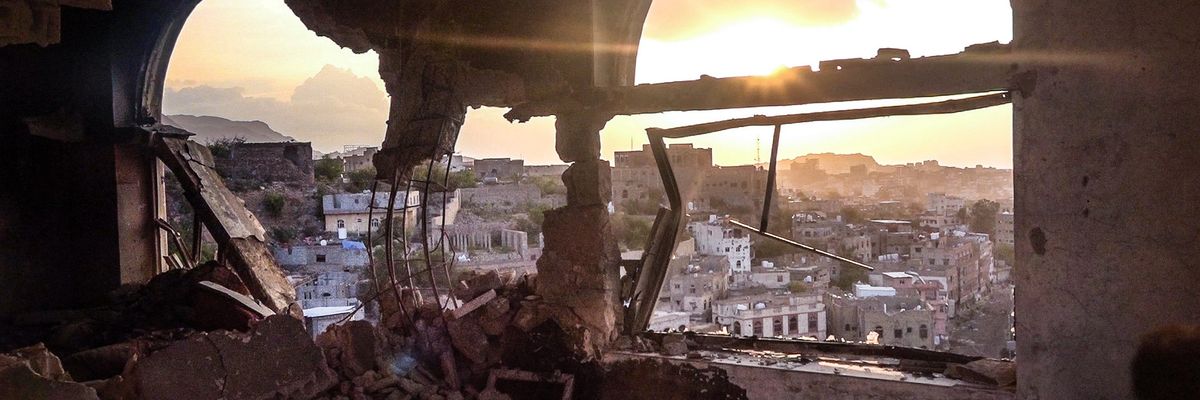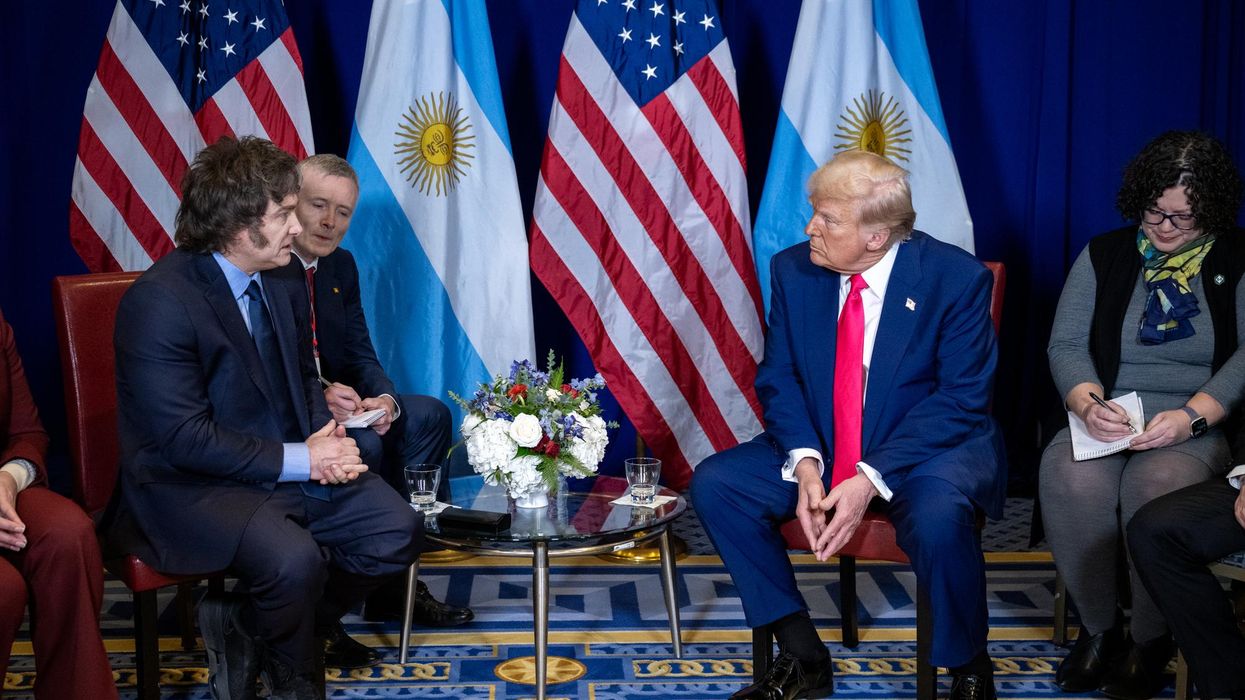In recent weeks, endgames for multiple conflicts in the Middle East have become visible. The clearest developments have unfolded in Libya, where forces backed by Egypt and the United Arab Emirates (UAE) have consolidated control of much of the country and now stand poised at the edge of Tripoli. Khalifa Haftar, the leader of the Libyan National Army, has vowed to take the capital from rival Faiez Serraj, who heads the U.N.-backed Government of National Accord. Serraj has little hope of fending off Haftar, who looks set to become the new strongman of Libya. No reasonable observer wants another bloody siege of Tripoli, and so the best resolution to the situation is some sort of negotiated settlement in which Haftar is recognized as the de facto ruler of Libya with some political accommodation made for Serraj and factions aligned with him. The fact that Libya now faces the prospect of either carnage and chaos in Tripoli or rule by a new military leader is happy news for almost no one. But the new political reality and its clearly defined outcomes nonetheless represent a greater measure of stability than Libya has seen in recent years as much of the country fell into a kind of anarchy.
In Syria, meanwhile, a new status quo is also taking shape. The regime of President Bashar al-Assad has steadily retaken territory from rebel groups in the south and west of the country after teetering on the edge of collapse in the face of an armed uprising that began with the Arab Spring. In the eastern part of the country, the Islamic State has effectively collapsed after losing a long struggle against local Kurdish forces backed by the United States. Significantly, Russia and Turkey have inserted themselves in northeastern Syria and become major players in the complex struggle. The situation in areas not under formal control of the Syrian regime remains volatile and fluid, but the ultimate outcome of the country’s long and tragic war at this point is all but certain. The regime in Damascus will remain, and the areas currently outside its control will either stay active conflict zones or once again become part of Assad’s Syria in a negotiated settlement.
In Yemen, a cease-fire and eventual peace deal is starting to come into view for the first time since war erupted in that country in 2014 when Houthi rebels overthrew Yemeni President Abd-Rabbu Masour Hadi and seized Sanaa. Saudi Arabia viewed the Houthi movement as an Iranian proxy and unleashed a hellish air war in Yemen while working to restore Hadi to power. The UAE joined the Saudi cause, and the United States stepped forward reliably with support for its longtime regional ally. But Saudi Arabia basically became the owner of the conflict as year after year of bombings by Saudi forces led to mounting casualties and refugees but no real progress toward reinstating Hadi. In fact, Saudi’s Yemeni allies nearly launched an internal war against one another, and the Houthi rebels showed signs of growing strong, not weaker, as Iran deepened its involvement in the country. Leadership in Riyadh has recently slowed airstrikes and now seems more inclined than ever to pursue negotiations with the Houthis apparently in the hope of ushering in a post-conflict unity government more aligned with Saudi Arabia than Iran.
Taken together, these developments form what passes for a moment of calm in the Middle East and presents the U.S. with a kind of inflection point where Washington might reconsider its strategy. Areas of instability in the Middle East are shrinking visibly. State actors are consolidating control of territory formally and through proxies, and a new strategic framework for the region is now materializing. If the U.S. stayed true to form, its actions in this moment would follow the strategic logic of the Carter Doctrine, which in practice calls for U.S. troops to be positioned close to oil while military aid flows readily to Saudi Arabia and armed groups seen as useful. And indeed this policy reflex is clearly evident in the recent moves by President Trump, who has dispatched troops to Saudi Arabia and left a contingent of forces in northern Syria to guard oil fields. In the minds of Carter Doctrine followers, and Trump is surely one whether he realizes it or not, remaining pockets of instability like the ones we see now represent waning opportunities to shape emerging outcomes to U.S. liking. In other words, as relative quiet settles over the region, intervention is nonetheless the U.S. policy impulse. But this is exactly the opposite of what the United States should do if it truly wants to see the Middle East become a more peaceful region. Washington should take this moment to step back from Libya, Yemen, Syria and all other conflicts brewing in the Middle East, because that is the best way to help bring about peaceful settlements.
Longstanding political science research on the effects of intervention in conflicts shows that wars tend to last longer when outside players become involved. The logic of this is somewhat counterintuitive – if you want peace, let the war unfold. But it holds true nonetheless. Interventions such as providing weapons, money and troops to support various factions within an armed struggle tend to just worsen the situation by making the conflict more complicated, bloodier and harder to resolve due to a lengthening list of stakeholders. This tendency has been evident in dozens of conflicts around the world since the end of World War II and appears to be holding true for the United States in the Middle East now. No clear-headed observer of the Middle East in recent years would argue that U.S. intervention has had a chilling effect on the region.
Moreover, what is generally true about intervention by outside powers in internal wars around the world is especially true for the United States in the Middle East, where the people of the region outside Saudi Arabia, the UAE, and Turkey tend to view American actions with suspicion or outright hostility. No ongoing conflict in the Middle East can benefit from further U.S. intervention at this point. More actions by Washington in Yemen, Libya, or Syria are likely to reignite cycles of violence that for the moment appear to be winding down. The time has come for the United States to disengage from these conflicts and think about how they can be resolved, not won.
What that means in practical terms for the immediate future is accepting the emerging status quo in the remaining conflict areas and encouraging nascent peace negotiations aimed at settling them, not jockeying for the best position in a final round of fighting. And over the long term, U.S. policymakers would do well to understand a lesson the current moment makes clear. Interventions intended to bring peace usually do just the opposite. If the United States wants to play a positive role in the region in the future, it should focus on negotiating peaceful solutions to the region’s wars instead of trying to manipulate them in the pursuit of an outmoded foreign policy strategy.
















